Montblanc Nicolas Rieussec GMT Chronograph: It Features the Combined Functionality of the Rolex Daytona & GMT in a Single Chronograph
I love being wrong. Especially about watches. I love it when my snobbery, short-sightedness and completely unsupported preconceived notions are suddenly imploded by a brand or a particular piece I only thought I knew.
For me, therein lies one of the great joys of collecting. That Road to Damascus moment when one not only becomes a true convert, but a die-hard advocate of a previously overlooked or dismissed gem. Montblanc’s Nicolas Rieussec Chronograph is a case in point.
I’ve written about my affinity for “The King of Complications” in previous Quill & Pad pieces (Omega De Ville Chronoscope, Zenith El Primero Chronomaster). From the very beginning of my journey as a collector, the chronograph has always held a special place in my heart.
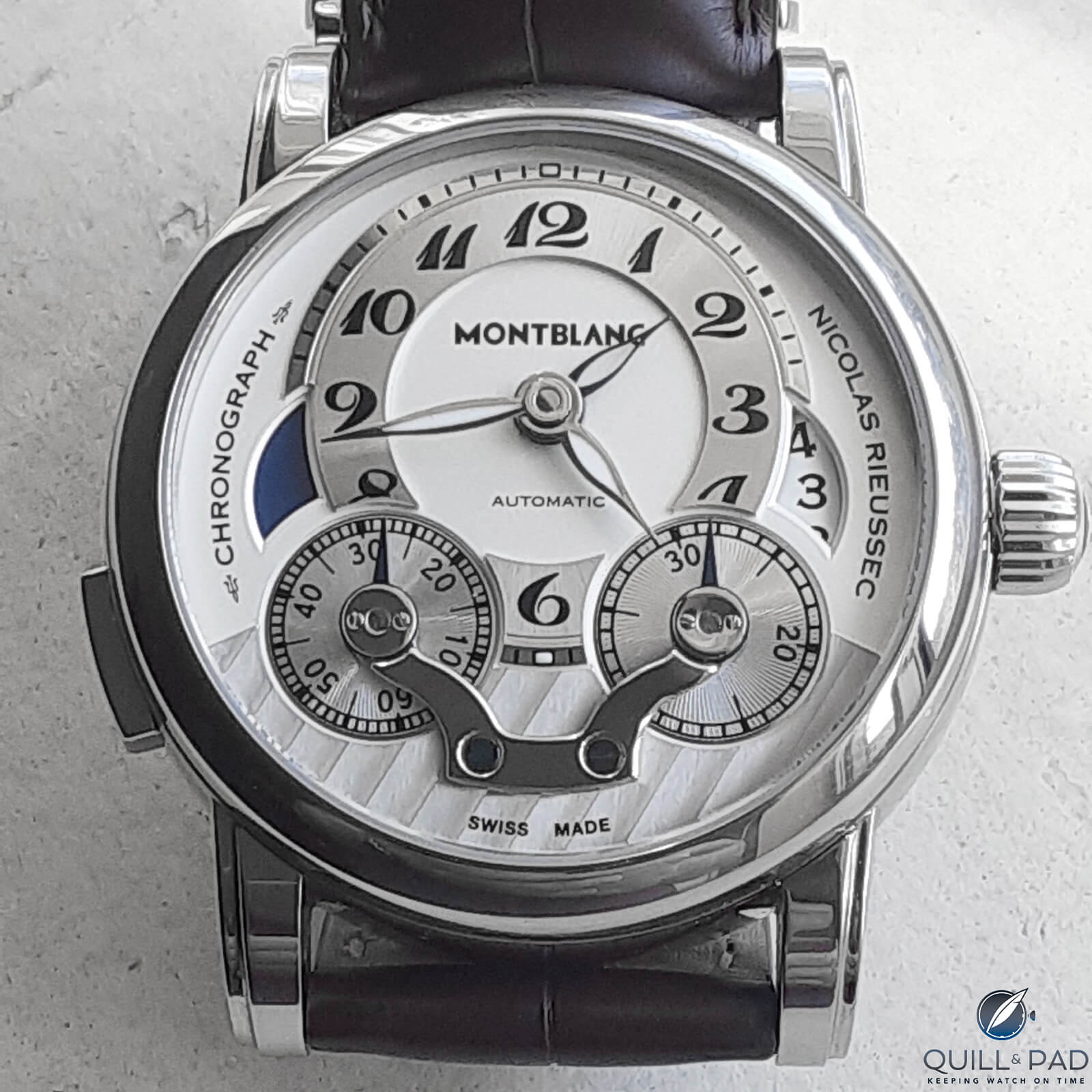
Montblanc Nicolas Rieussec GMT Chronograph (photo courtesy Quentin R. Bufogle)
My love affair with the chronograph
It was some years ago, as a still green-around-the-gills collector (I didn’t think of myself as a “collector” back then) that I first dipped my toe into the vast, chronograph pool. I purchased a Revue Thommen Day-Date 300 Meter Diver Chronograph 17030 from a grey market dealer for the princely sum of $670 (the most I’d ever paid for a watch at that point).
The Thommen diver chrono is a hefty 45 x 16.8 mm brute with a 53 mm lug-to-lug, equipped with a silicon strap and pin buckle substantial enough to hold up your trousers – and to my then unrefined eye, an absolute knockout; built like a tank with a surprisingly well executed dial featuring applied luminous markers and well lumed, semi-skeletonized broad sword hands and high polished case housing a near bullet-proof Valjoux 7750. It was love at first sight. I even grew to love the occasional whirr and rumble of the 7750’s unidirectional rotor. Talk about a watch that truly speaks to you!
The reference 17030 is still in production and Thommen has added a variety of color options for both dial and bezel. If you’re ever in the market for an inexpensive diver chrono that truly punches above its weight, I urge you to check it out.
But alas, passion fades. I eventually sold my Thommen and was even able to make a slight profit on the deal. Onward and upward …
Fast forward roughly a year later. While strolling through the Venetian Hotel & Resort in Las Vegas on my way to an early dinner at the Grand Lux Café (an overlooked gem of its own – take it from a former Las Vegas chef), I found myself doing a little window shopping in some of the watch boutiques along the way. As I passed a Tudor dealer, a woman came barreling out of the place. Seizing me by the arm, she hustled me toward the door.
“You need a new watch!” She said, a bit breathless from the effort.
Although I was wearing an Oris Audi GMT recently purchased from another grey market dealer for the princely sum of $750 (a new personal record), I thought, what the heck?
Ushering me inside the boutique, the woman pulled a red dial Tudor Ducati Fastrider Chronograph from the display case, eagerly insisting that I try it on. Talk about love at first sight! That dial … WOW! Fire engine red – the black, sunken tri-registers (capped with hands that almost appear to float) intensifying the overall pop. A set of narrow, black racing stripes extended vertically from 1 to 5 o’clock. Its unique, semi-skeletonized hands and large, polished applique Arabic numerals all but spelling out the words “RACING CHRONOGRAPH” in fiery, iridescent neon.
————————————————————————————————————–
—————————————————————————————————–
I recall being floored by a photo of a prototype 1979 Paul Newman Cosmograph Daytona reference 6263/6265 with a stunning red “panda” dial. Never put into production, only a handful of examples were made. Considered a connoisseur’s prize by collectors, one had sold for over $400,000 at a Geneva auction back in 2003. Now here it was on my wrist — reincarnated as a 42 mm Tudor special edition!
But it wasn’t just the dial. That wonderfully pliant, thickly bolstered integrated black calfskin strap with red stitching and single-fold deployant fixed with ceramic pins and secured by a clamshell clasp — it looked and felt amazing! Amazing too was the winding and setting action of the converted Valjoux 7750. Taut and crisply precise, there was none of the ropiness or excess play I’d experienced in some of the watches I’d owned. The tactile sensation it provided made the Ducati Fastrider a joy to both wind and set.
There was only one problem. Though I look back on it with a smile now, the $4,500 retail price was something I just couldn’t justify at the time. $4,500 seemed like a lot of money to spend on a watch. I had to pass on the Ducati. (My, how things have changed!)
A couple years later, I spotted a like-new, pre-owned Fastrider Ducati on Chrono24 with box & papers for substantially less than the one I’d been tempted by in that Tudor boutique. This one an all-black version – both dial and strap. Stark and sober, it had the understated cool its more exuberant, red dial cousin lacked. This time, I didn’t hesitate to pull the trigger.
Okay, so why the detour down memory lane? I tell you this only to assure you I’m not exactly a neophyte when it comes to the subject of chronographs. I’ve paid my dues and upped the ante, acquiring pieces with more sophisticated and elegant movements throughout the years. Learning the distinction between modular and fully integrated; column wheel and cam actuated; vertical and lateral clutch; flyback and rattrapante. Which brings me to the subject of this article …
The world’s most underrated chronograph?
Though I’ve heard many a self-proclaimed watch expert sing its praises, the Montblanc Nicolas Rieussec was a chronograph I simply refused to consider. What business did a manufacturer of fine writing instruments have turning out watches – and an in-house chronograph with a true GMT function, no less?
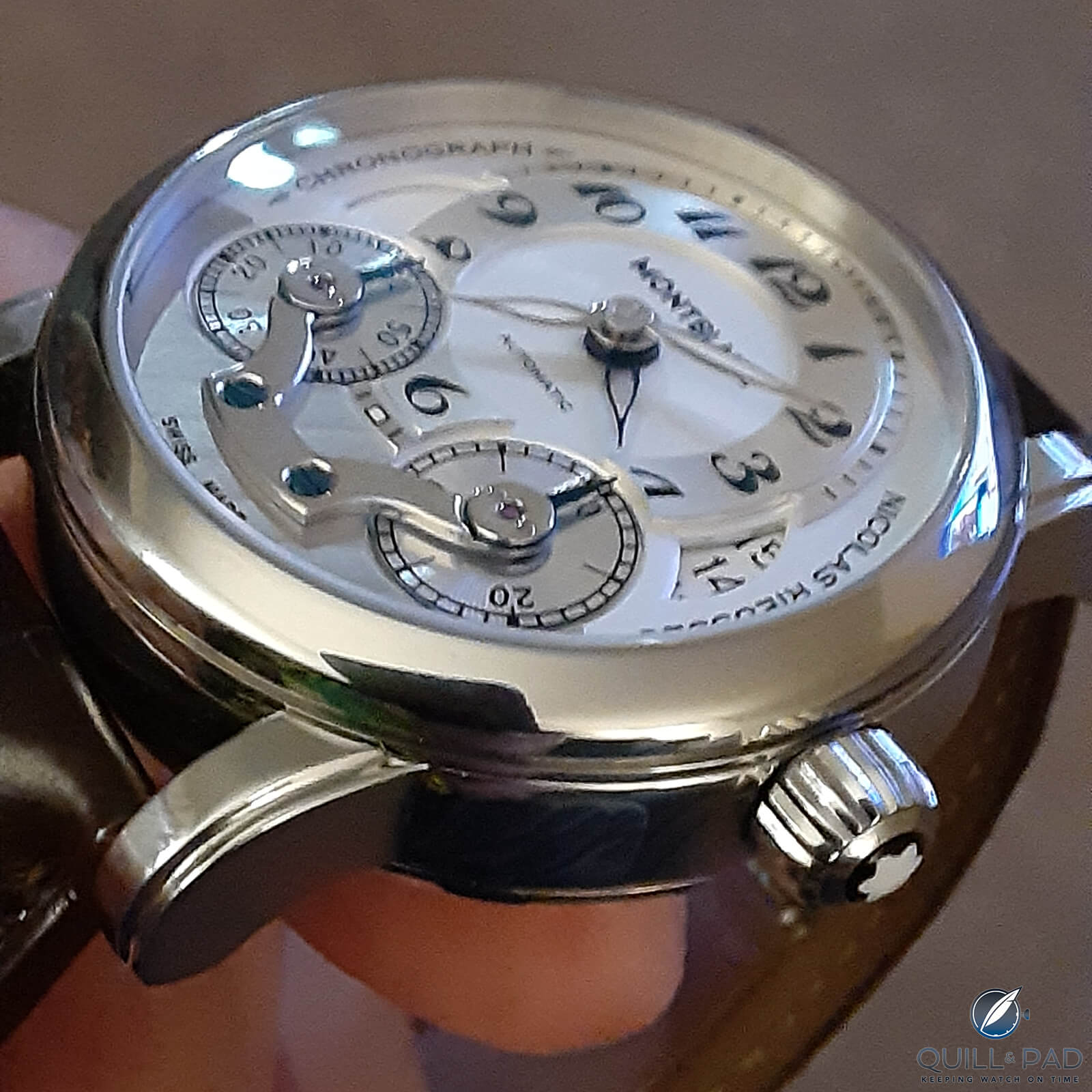
Montblanc Nicolas Rieussec GMT Chronograph (photo courtesy Quentin R. Bufogle)
No, no, no! It simply wasn’t possible! It had taken Rolex nearly a hundred years to produce its own in-house chronograph movement, while the Trinity itself had routinely used ebauche movements purchased from JLC and Lemania rather than taking on the monumental task; the daunting investment of both time and capital required to produce a bon a fide, fully integrated automatic in-house chronograph movement – an undertaking that had nearly bankrupted Zenith in producing the El Primero.
No! This had to be a boondoggle of epic proportions! Montblanc has simply slapped a Dubois-Depraz module atop one of the entry-level ETA movements it’s typically used in earlier offerings …. Or perhaps a modestly decorated Valjoux 7750 with some engine turning and a few blued screws (dyed, not fired) installed with a fancy, gold-plated custom rotor just to make it all look sorta haute-horlogerie-ish?
After all, Frank Muller had used a modified 7750 base in some of his $20K plus precious metal chronographs! What would you expect from the maker of expensive fountain pens?
I must admit. Thoughts similar to these entered my mind at the mere mention of the Nicolas Rieussec. I’m pleased to confess, I was wrong.
—————————————————————————————————–
—————————————————————————————————–
New star on the horizon
In 2008, after little more than a decade of turning out timepieces powered by third party movements, Montblanc decided it was time to finally plant its flag.
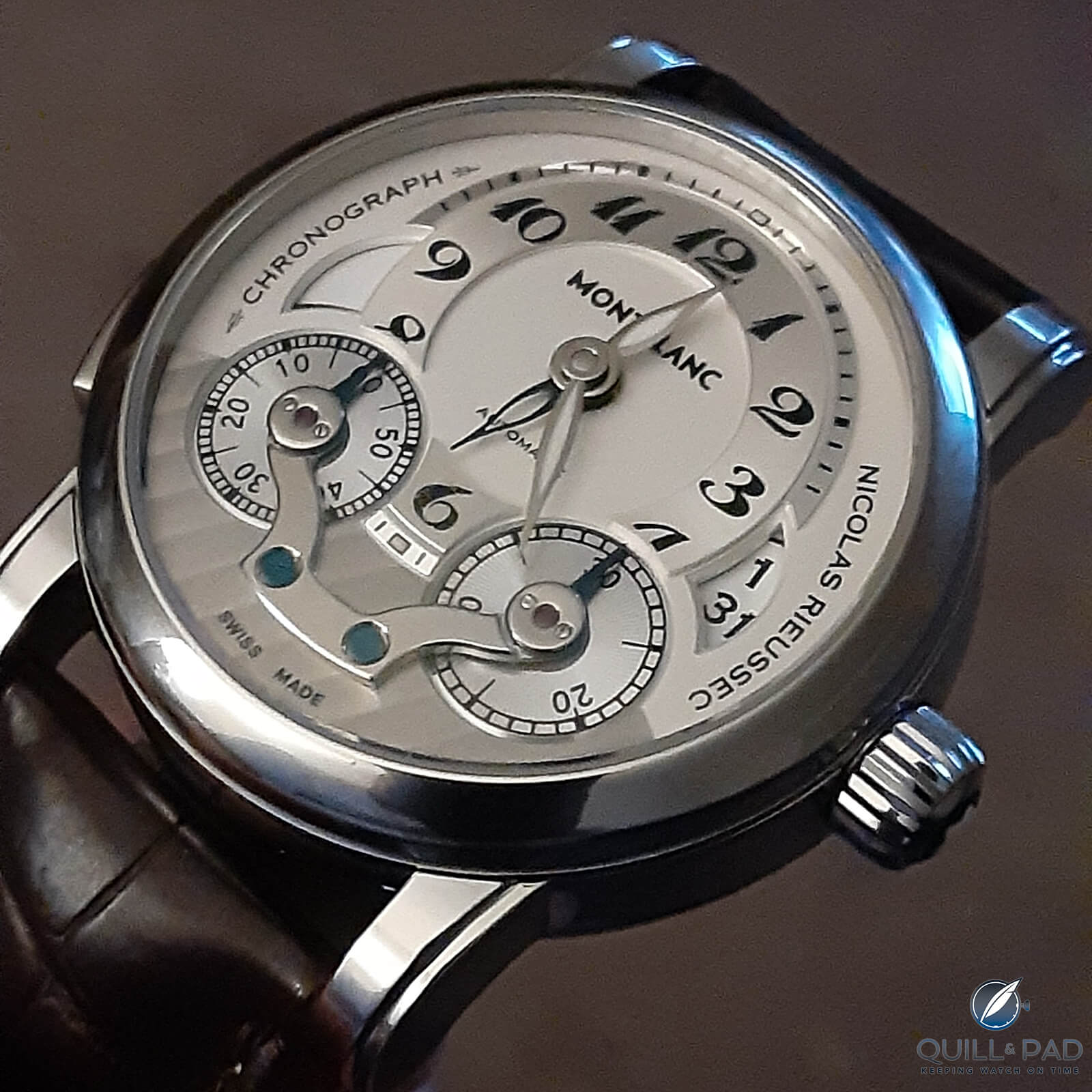
Montblanc Nicolas Rieussec GMT Chronograph (photo courtesy Quentin R. Bufogle)
With the debut of the Nicolas Rieussec Chronograph — so named for 18th century French watchmaker Nicolas Mathieu Rieussec, once credited as the inventor of the chronograph (now accredited to Louis Moinet) – Montblanc established itself as a serious contender in the super-competitive, sub $15K luxury watch market dominated by the “Luxury 3” … Rolex, Omega and Brietling.
An upscale timepiece with a strikingly unique aesthetic and fully integrated, in-house chronograph movement, the Rieussec was initially offered as a manual wind, quickly followed by an automatic version. The message was clear: the boys from Hamburg weren’t just making pens anymore.
Caliber MB R200
From their Le Locle factory, Montblanc has produced what may arguably be a contender for best fully integrated, automatic chronograph movement in its class – a class that includes the Rolex Calibre 4130 and Brietling B01.
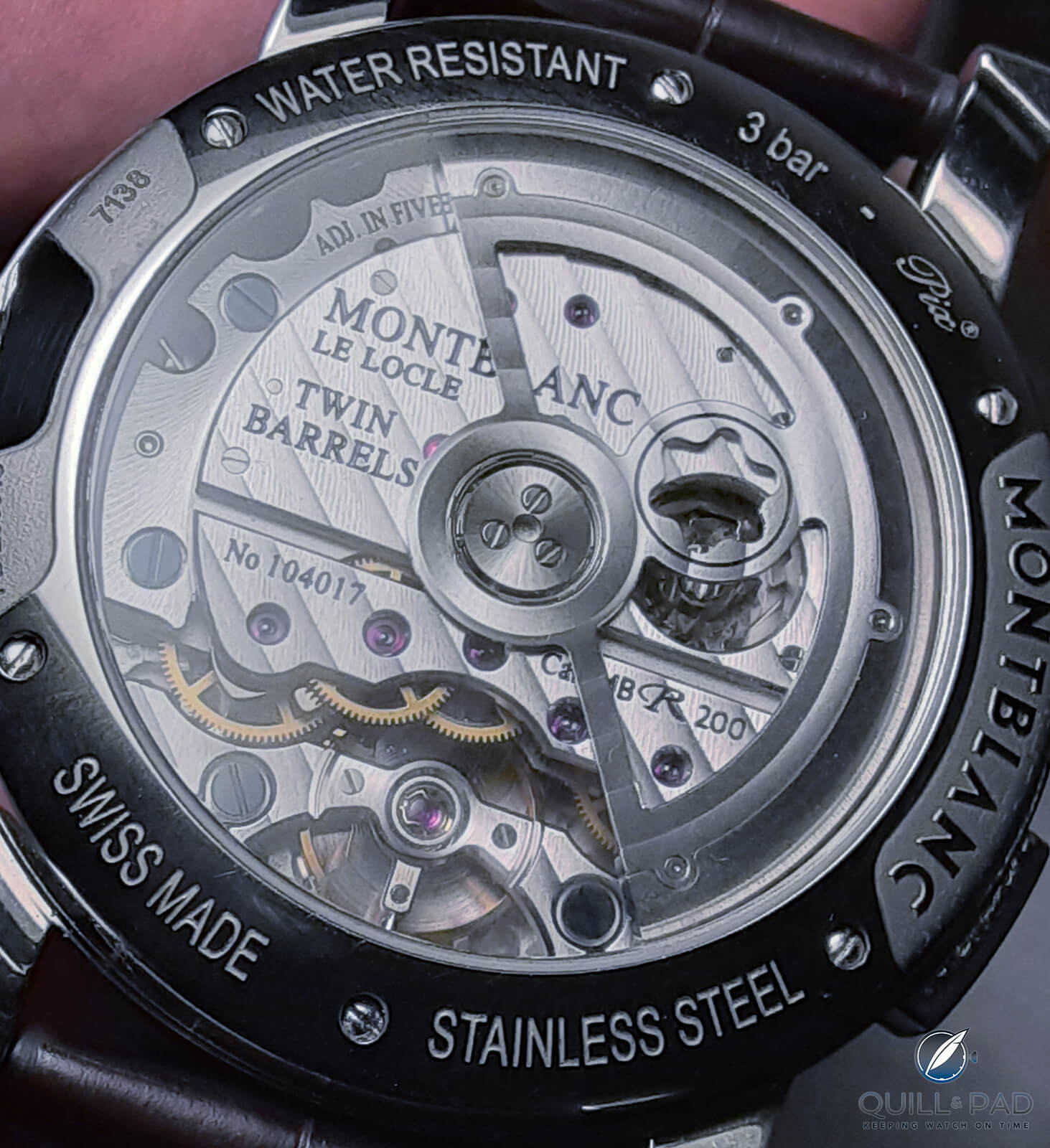
Caliber MB R200 movement of the Montblanc Nicolas Rieussec GMT Chronograph (photo courtesy Quentin R. Bufogle)
Fitted with Patek Philippe’s own free-sprung Gyromax balance and secured by a full “batwing” style bridge, the MB R200 is a 40 jewel, 292 part, twin-barrel, mono-pusher, column wheel, vertical clutch chronograph movement with “true” GMT complication, 72 hours power reserve and adjusted in 5 positions. (Did I mention panoramic date and day/night indicator?)
The architecture is beautiful. One look at this twin-barrel, 40 jewel stunner and you’ll throw rocks at the next modified 7750 that comes your way.
The partially exposed gear train provides a wonderful visual, and the decoration and finish — while by no means Laurent Ferrier or Ferdinand Berthoud caliber — is strictly upper echelon, luxury level: bright bevels, Geneva stripes, and a combination of black polished and fired blue screws. The MB R200 ranks as one of the most visually striking automatic chronograph engines – a worthy rival of elegant movements such as the Frederic Piguet 1185 and Zenith El Primero.
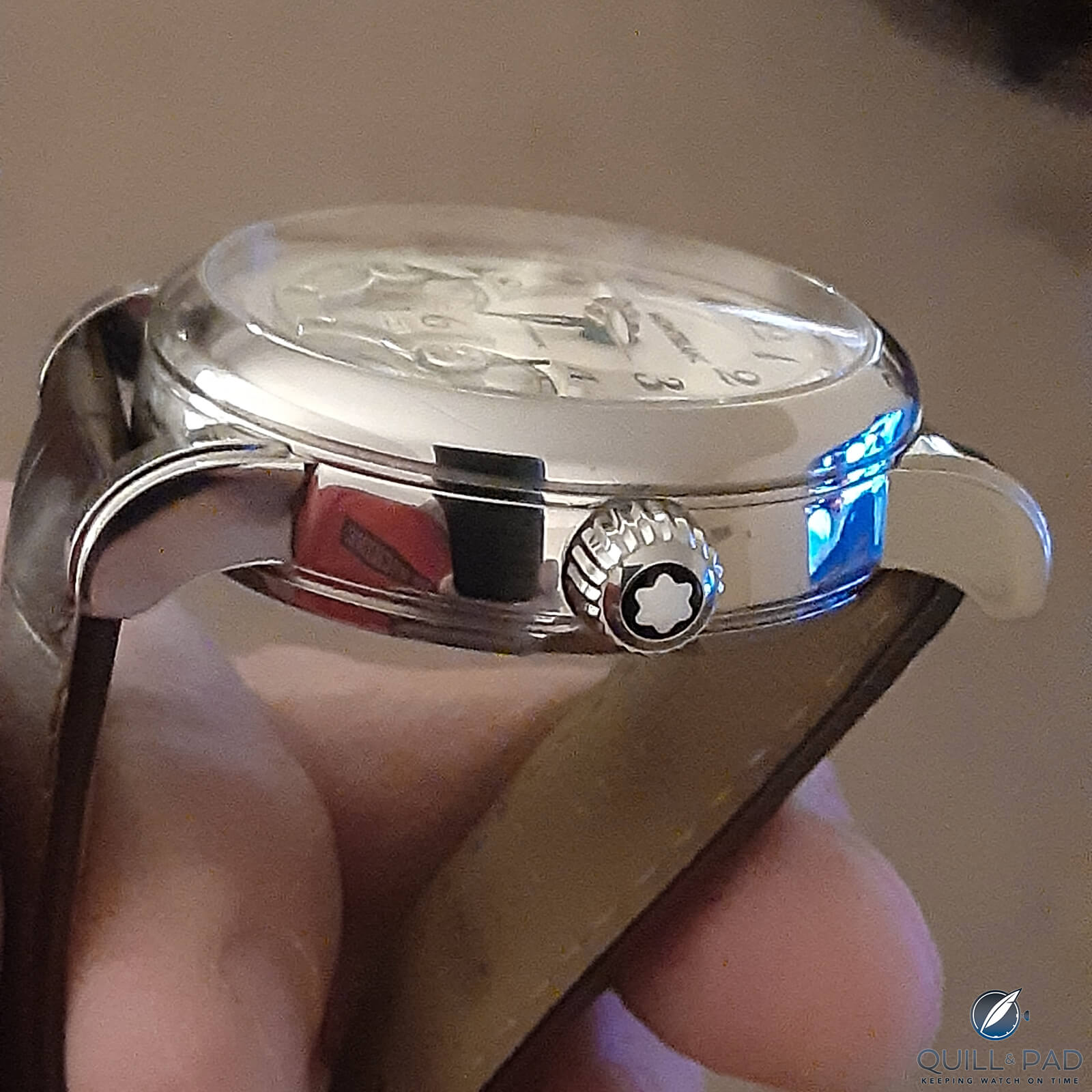
Montblanc Nicolas Rieussec GMT Chronograph (photo courtesy Quentin R. Bufogle)
The mono pusher design – a rarity amongst modern chronographs – is wonderfully user-friendly, less obtrusive and a refreshing change from the standard twin pusher arrangement.
The chronograph display is also a complete departure from the standard configuration. Based on Nicholas Rieussec’s own 1821 invention, sub-dials are replaced by two rotating disks marking seconds and minutes. Two stationary indices mounted on a beautiful, black polished bridge fixed by two fired blue screws now allow you to track the elapsed time.
—————————————————————————————————–
—————————————————————————————————–
Fit and finish
Although superbly functional, the overall design of the Rieussec is wonderfully unorthodox. While some might find its 43 x 14.8 mm polished case slightly oversized, its domed sapphire and bezel, beautifully rounded case flanks and curved lugs mitigate any potential chunkiness and allow it to wear comfortably. Though long on wrist presence, the Rieussec is at once elegant and refined. Short of swimming the English Channel, it’s a suitable chrono for almost any occasion.
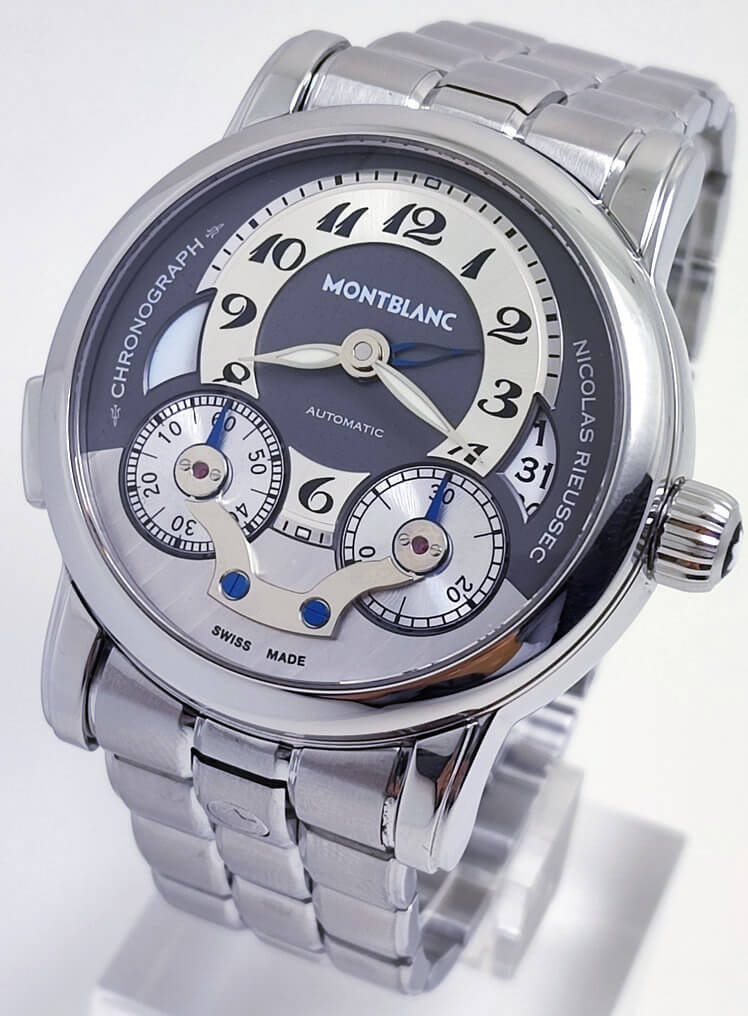
Montblanc Nicolas Rieussec GMT Chronograph (photo courtesy Catawiki)
Conclusion
While pre-owned prices hover somewhere around the affordable $5K “sweet spot” (nearly 50% off retail for a watch that offers the combined functionality of both the Rolex Daytona & GMT), it’s anyone’s guess what the future may hold for the Nicolas Rieussec Chronograph.
Whether or not it remains a perennial sleeper, only time will tell. But for those enthusiasts willing to forgo the usual suspects and embrace something truly unique, a prize awaits. Count me in.
For more information on the current model, please visit www.montblanc.com/Item/Index?cod10=1647597320779373&siteCode=MONTBLANC_US
Quick facts: Nicolas Rieussec Chronograph GMT
Reference: 104273
Case: 43 mm x 14.8 mm; 51 mm lug-to-lug, 22 mm lug width. Stainless steel, polished, sapphire display back, push/pull crown with inset Montblanc peak icon.
Movement: MB R200 automatic winding, 40 jewels, 28,800 vph/4 Hz, quickset date, non-hacking. Column wheel, vertical clutch, twin-barrel, free-sprung Gyromax balance, mono-pusher chronograph with “true” GMT & 72 hrs. power reserve.
Crystal: Sapphire.
Bracelet/strap: Large, rectangular scale alligator, semi-gloss finish with monotone stitch. Stainless steel, polished single-fold, twin trigger deployant clasp.
Water-resistant: 30 m
Original Retail Price: $11,000 (approx.), no longer in production
You might also enjoy:
Why I Bought It: Rolex Air-King “Bloodhound” Ref. 116900
Why I Bought It: Collector Quentin R. Bufogle And His 2006 Omega De Ville Chronoscope Chronograph
Why I Bought It: The Zenith Chronomaster Tribute To Charles Vermot
New And Nostalgic: Montblanc 1858 Split Second Chronograph In Lime Gold And 1858 Monopusher Chronograph Origins Limited Edition 100 In Bronze Half-Hunter Case
Five Great Montblanc Chronographs For 2020: One For (Nearly) Every Occasion
Montblanc 1858 Geosphere: Travel Never Looked So Good
Discovery, Firsts, And The Louis Moinet Compteur De Tierces

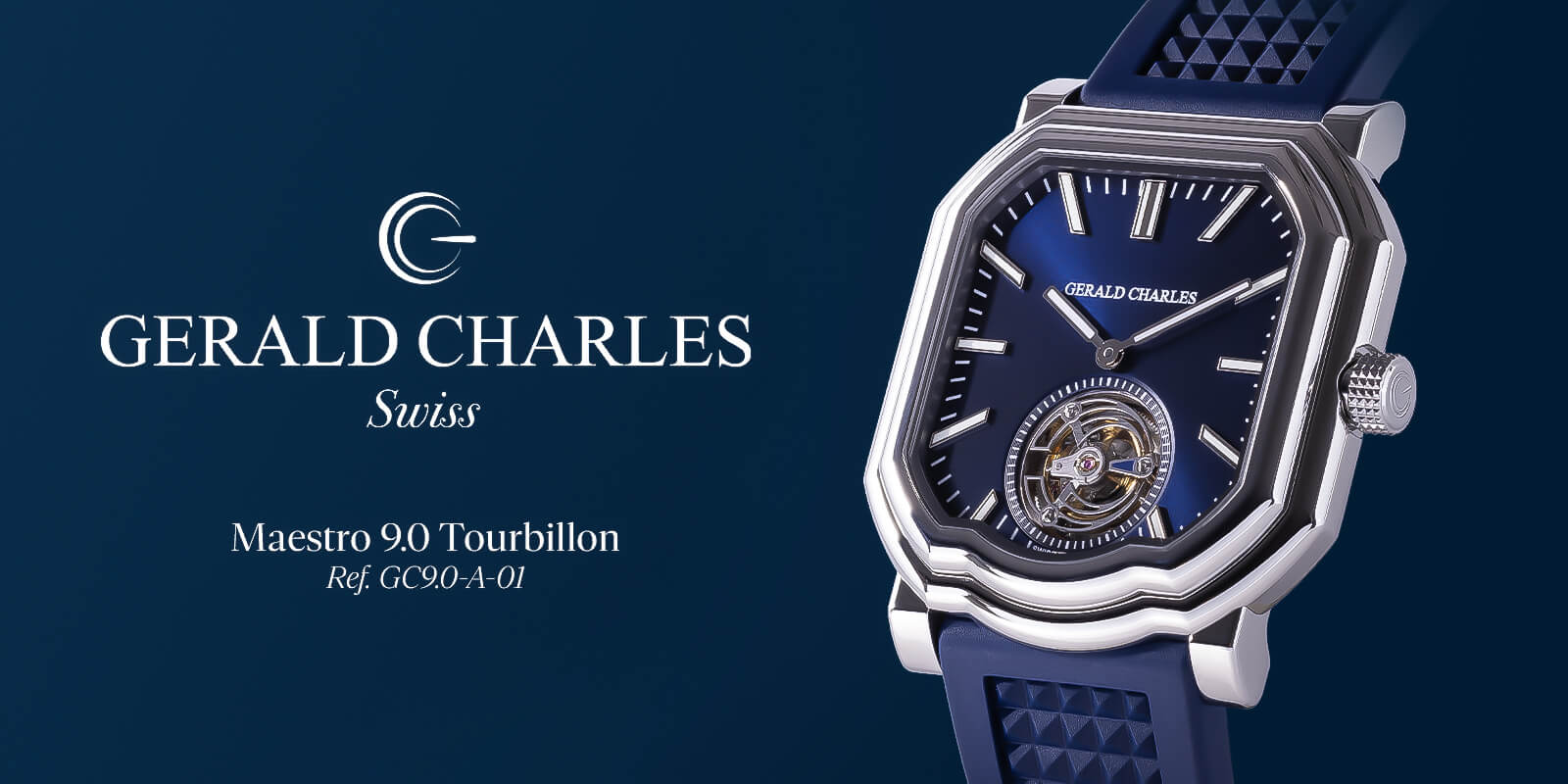
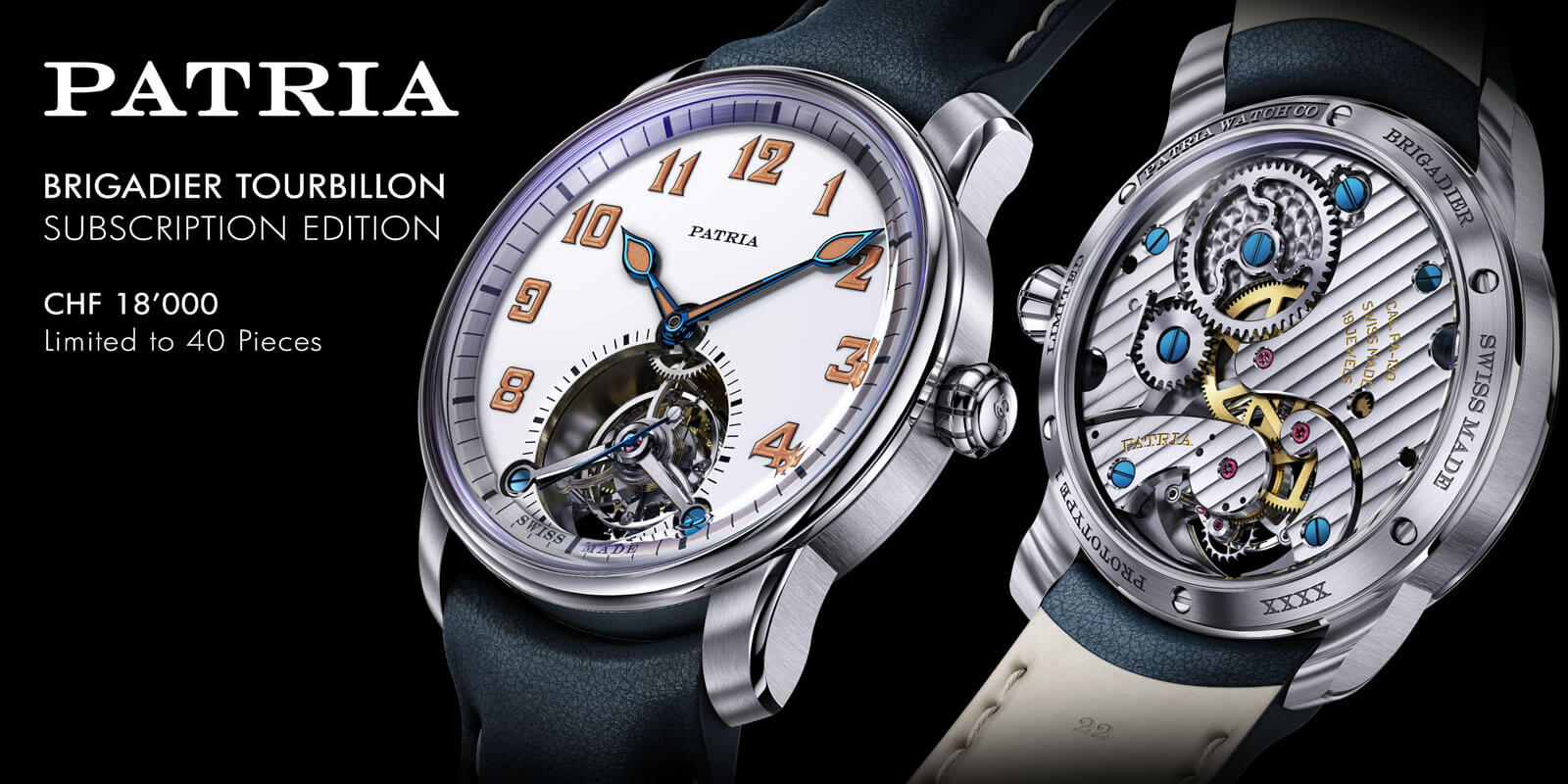
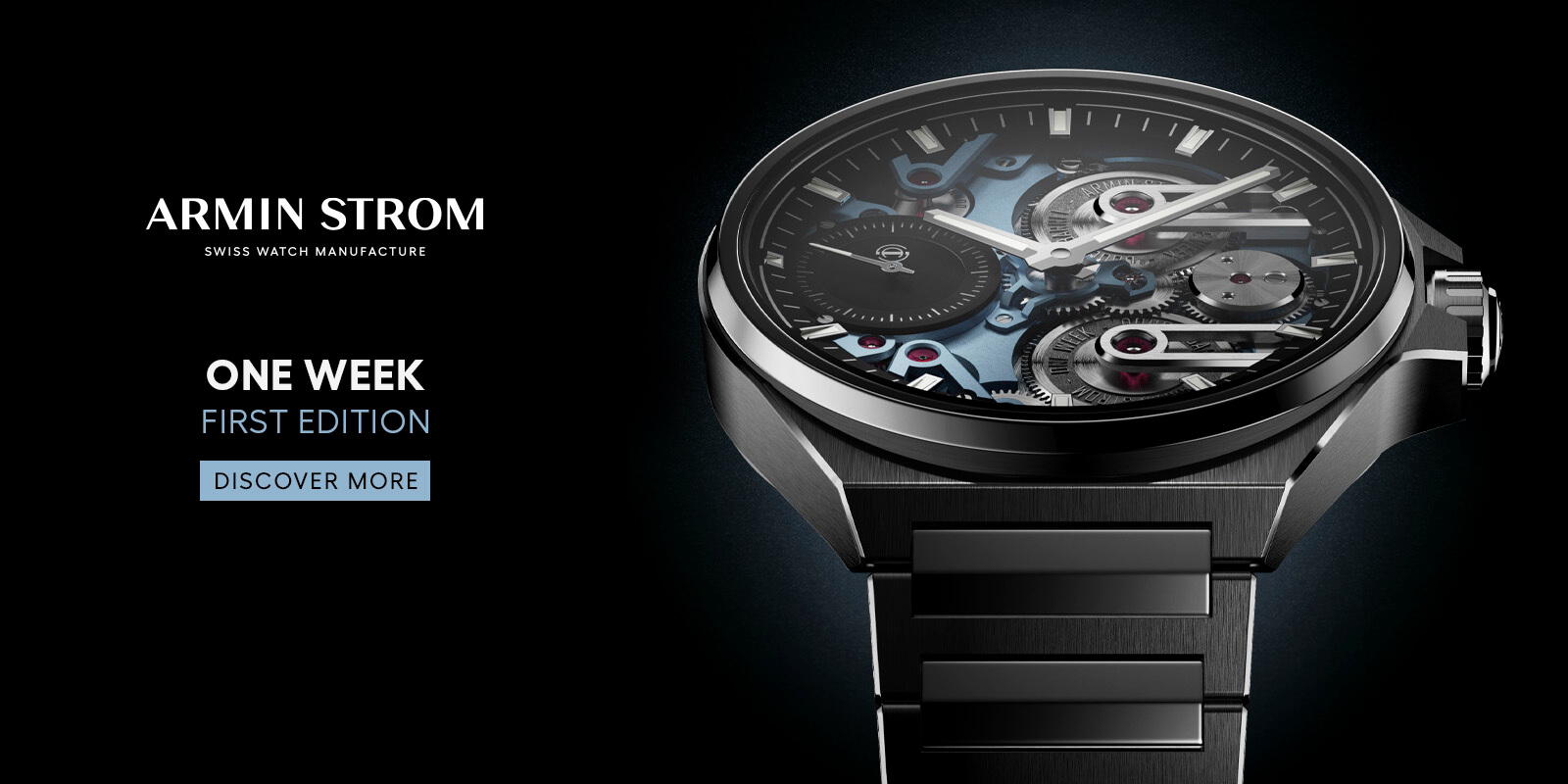


Leave a Reply
Want to join the discussion?Feel free to contribute!